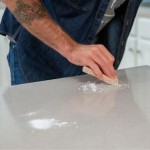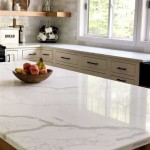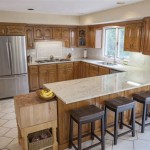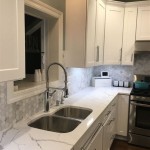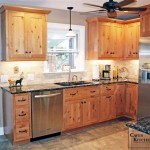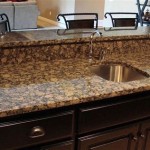144 Inch Butcher Block Countertop: A Comprehensive Guide
The 144-inch butcher block countertop represents a significant investment in both functionality and aesthetics for any kitchen or workspace. This substantial surface offers ample room for food preparation, crafting, or other activities requiring a durable and visually appealing platform. Understanding the characteristics, benefits, maintenance requirements, and installation considerations is crucial for making an informed decision about incorporating such a countertop into a design.
Butcher block countertops derive their name from their traditional use in butcher shops, where they served as robust and easily cleaned surfaces for cutting and preparing meat. Modern applications extend far beyond this original purpose, with butcher block finding favor in residential kitchens, restaurants, and even commercial workspaces. The inherent warmth and natural beauty of wood contribute to a welcoming atmosphere, while the durability allows for years of dependable service.
The 144-inch length is particularly impactful. It allows for expansive islands, continuous countertops across multiple cabinets, or the creation of a dedicated workstation. The seamless nature of a single long countertop minimizes joins and seams, which can be potential weak points for moisture intrusion and bacterial growth. This length necessitates careful planning and structural support during installation.
Wood Species and Construction Techniques
The selection of wood species significantly impacts the appearance, durability, and cost of a 144-inch butcher block countertop. Common choices include maple, walnut, cherry, oak, and birch, each offering unique grain patterns, color variations, and hardness properties. Maple, known for its light color and tight grain, is a popular choice for its affordability and clean aesthetic. Walnut, with its rich dark tones and distinctive grain, provides a more luxurious look. Cherry offers a warm reddish hue that deepens over time, while oak is valued for its strength and prominent grain. Birch is a budget-friendly option, often used in pre-fabricated butcher block.
Beyond the wood species, the construction method is vital to the countertop's longevity and performance. Butcher block is typically constructed in one of three ways: edge grain, end grain, or face grain. Edge grain butcher block features the edges of the wood strips facing upward, creating a durable and stable surface that is resistant to warping. This is the most common and versatile construction method. End grain butcher block, where the ends of the wood strips are exposed, is considered the most durable and forgiving surface for cutting, as it absorbs knife marks better than other orientations. It also offers a distinctive checkerboard-like appearance. Face grain, with the flat surface of the wood strips facing upward, is the least expensive option but is also the least durable and most susceptible to scratches and warping.
The gluing process is also crucial. High-quality, food-safe adhesives are essential to ensure the long-term stability of the butcher block. The strips of wood must be tightly bonded to prevent separation or cracking over time, particularly in humid environments or under heavy use. The quality of the adhesive and the clamping pressure applied during the gluing process directly affect the durability of the final product.
The quality of the wood itself also matters. Kiln-dried lumber is essential to minimize warping and cracking after installation. The moisture content of the wood should be carefully controlled to ensure the countertop remains stable in the environment where it will be used. Selecting wood from reputable suppliers who prioritize quality control is a critical step in ensuring a long-lasting and aesthetically pleasing butcher block countertop.
For a 144-inch countertop, the construction method is even more important. The longer length will amplify any weaknesses in the construction. Inadequate gluing, poorly dried lumber, or the use of face-grain construction will all lead to issues over time. It is highly recommended to consider edge-grain or end-grain construction for a countertop of this length.
Installation Considerations for a 144-Inch Countertop
Installing a 144-inch butcher block countertop is a complex process that requires careful planning and execution. Due to the size and weight of the countertop, adequate support is essential to prevent sagging or cracking. This support typically comes from the base cabinets, but additional bracing may be necessary, especially for overhangs or unsupported areas.
Before installation, it is important to acclimate the butcher block to the environment where it will be used. This involves allowing the countertop to sit in the room for several days to adjust to the temperature and humidity levels. This helps to minimize warping or cracking after installation.
Properly sealing the butcher block is crucial to protect it from moisture and stains. Food-safe oil finishes, such as mineral oil or tung oil, are commonly used to penetrate the wood and create a water-resistant barrier. Multiple coats are typically required, and the finish must be reapplied periodically to maintain its protective properties. Polyurethane finishes can also be used, but these create a harder, less natural-looking surface and are not recommended for areas where cutting will be done directly on the countertop.
During installation, it is important to use appropriate fasteners to secure the butcher block to the base cabinets. Screws or bolts should be used in conjunction with slotted or oversized holes to allow for natural expansion and contraction of the wood. This prevents the countertop from cracking or warping due to changes in humidity.
For a countertop of this length, it is often necessary to have professional assistance with the installation. The weight and size of the countertop can make it difficult to handle, and improper installation can lead to costly repairs or replacements. A qualified installer will have the experience and expertise to ensure the countertop is properly supported, sealed, and secured.
Considerations for sink and appliance cutouts are also paramount. Precise measurements are essential to ensure a proper fit. Sealing the exposed edges of the cutouts is critical to prevent water damage. A professional installer will have the appropriate tools and techniques to create clean, sealed cutouts that will not compromise the integrity of the countertop.
The weight of a 144-inch butcher block countertop should not be underestimated. Depending on the wood species and thickness, it can weigh several hundred pounds. This weight must be factored into the structural planning for the cabinets and the installation process. Reinforcing the cabinet bases may be necessary to support the added weight.
Maintenance and Care of Butcher Block
Maintaining a 144-inch butcher block countertop requires regular care to preserve its beauty and functionality. Cleaning should be done with a mild soap and water solution, avoiding harsh chemicals or abrasive cleaners. Spills should be wiped up immediately to prevent staining.
Regular oiling is essential to maintain the moisture content of the wood and prevent cracking. Mineral oil or other food-safe oils should be applied every few weeks or months, depending on the level of use. The oil penetrates the wood, providing a protective barrier against moisture and helping to prevent staining.
While butcher block is durable, it is not indestructible. Scratches and dents are inevitable, especially in areas where cutting is done directly on the countertop. Minor scratches can often be sanded out with fine-grit sandpaper and then re-oiled. Deeper dents may require more extensive repairs, such as filling with wood filler or replacing the damaged section.
Avoid placing hot pots or pans directly on the butcher block, as this can scorch or damage the wood. Use trivets or hot pads to protect the surface. Also, avoid prolonged exposure to moisture, as this can lead to warping or cracking. Wipe up spills promptly and ensure the countertop is properly sealed.
Sanitizing butcher block is another important consideration. While wood has natural antibacterial properties, it is still important to disinfect the surface regularly, especially after preparing raw meat or poultry. A diluted bleach solution or a food-safe disinfectant can be used to kill bacteria.
Regular maintenance also includes inspecting the countertop for any signs of damage, such as cracks, warping, or loose joints. Addressing these issues promptly can prevent them from becoming more serious problems. Small cracks can often be filled with wood filler, while loose joints may require re-gluing.
A 144-inch butcher block countertop is an investment that, with proper care and maintenance, can last for many years. Following these guidelines will help to ensure that the countertop remains a beautiful and functional feature of the kitchen or workspace.

36 X 144 Maple Butcher Block Countertop

144 Long 1 75 Thick Maple Butcher Block Countertop

144 Long 1 75 Thick Maple Butcher Block Countertop

Birch Butcher Block 25 X 144

Beech Butcher Block Countertops Country Mouldings

144 Inch Long Kitchen Countertops Accessories At Com

36 Inch Wide 144 Long Kitchen Countertops Accessories At Com

Unfinished Birch Butcher Block Wood Countertops Super Home Surplus View
Prefab Stone Wood Countertops Floor Decor

Butcherblock Countertop Cherry Unfinished Multiple Sizes
See Also

